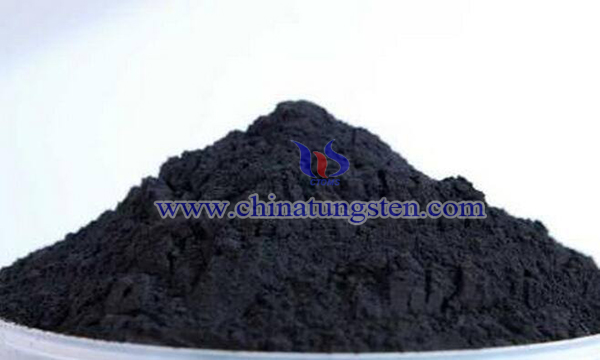Composite Lubricant Film of Tungsten Sulfide and Tungsten Nitride
- Details
- Category: Tungsten Information
- Published on Wednesday, 01 August 2018 17:19
It is well known that the movement of mechanical parts is always accompanied by friction and wear, which is generally lubricated in order to reduce the friction and wear between moving mechanical parts. The solid lubricating film material has been widely used because it has the advantages of avoiding contamination of industrial parts by liquid lubrication, and being able to work under severe conditions such as low temperature and high temperature.

For example, tungsten sulfide film is currently widely used. However, although the tungsten sulfide film has good lubricating properties, it has low compressive strength due to low hardness, it is not strong in wear resistance, and is highly susceptible to failure under high humidity conditions. In order to overcome the deficiencies in the prior techniques, a research team has proposed a composite film of tungsten sulfide and tungsten nitride which has high hardness and good moisture resistance.
The preparation method of the composite lubricant film material of tungsten sulfide and tungsten nitride adopts magnetron sputtering method, and the main steps are as follows:
Step 1, firstly polish, clean and dry the substrate, and then place the composite target and the substrate composed of the metal tungsten and the tungsten sulfide in the cathode of the vacuum chamber of the magnetron sputtering device and the sample stage; wherein, in the composite target The area ratio between the metal tungsten and the tungsten sulfide is 1.3:2, the distance between the composite target and the substrate is 70 mm, the periphery of the composite target is pressed and fixed by a metal tungsten ring, and the substrate is stainless steel.
Step 2, the vacuum chamber is evacuated. After the vacuum chamber has a vacuum of 1.5×10-3 Pa and the substrate temperature reaches 230° C, argon gas is introduced into the vacuum chamber and pre-sputtered for 16 minutes. Then, nitrogen gas is introduced into the vacuum chamber, and the vacuum chamber is placed under an argon-nitrogen mixed atmosphere for 4 hours. The argon-nitrogen mixed atmosphere has a flow ratio of argon to nitrogen of 15:35 and a working pressure of 0.9 Pa. The sputtering power is 90W. After the end of the sputtering, the substrate is stopped, the argon-nitrogen mixed gas is turned off, the molecular pump is evacuated, and the substrate temperature is maintained at 195 ° C for 1 h, and then the temperature is lowered to below 100 ° C at a rate of 2 ° C/min to stop vacuuming. The film was cooled to room temperature under vacuum to obtain a composite film of tungsten sulfide and tungsten nitride.
The obtained target products are characterized by scanning electron microscopy and X-ray diffractometry, respectively. From the results, it is found that the target product was in the form of a film having a thickness of 1 to 6 μm, which is densely arranged with particles having a particle diameter of 5 to 20 nm. The film consists of two phases of WS2 phase and WN phase. The hardness and comprehensive properties of the target product are greatly improved. The hardness can reach 20GPa and the friction coefficient is only 0.1. This is based on the high hardness, high modulus of elasticity and good compactness of tungsten nitride, and the fact that both tungsten sulfide and tungsten nitride are metal tungsten compounds, which have strong interphase bonding characteristics and are effective. After integration, the film utilizes the high hardness of tungsten nitride to improve its hardness and wear resistance.
The preparation method has a lower requirement to equipment, a simple and easy operation, and does not have any adverse effect on the substrate. It is suitable for large-scale industrial production.
- Tungsten Powder Manufacturer & Supplier, Chinatungsten Online: tungsten-powder.com
- Tungsten News & Prices of China Tungsten Industry Association: www.ctia.com.cn
- Molybdenum News & Price: news.molybdenum.com.cn
- Tel.: 86 592 5129696; Fax: 86 592 5129797; Email: sales@chinatungsten.com



 sales@chinatungsten.com
sales@chinatungsten.com